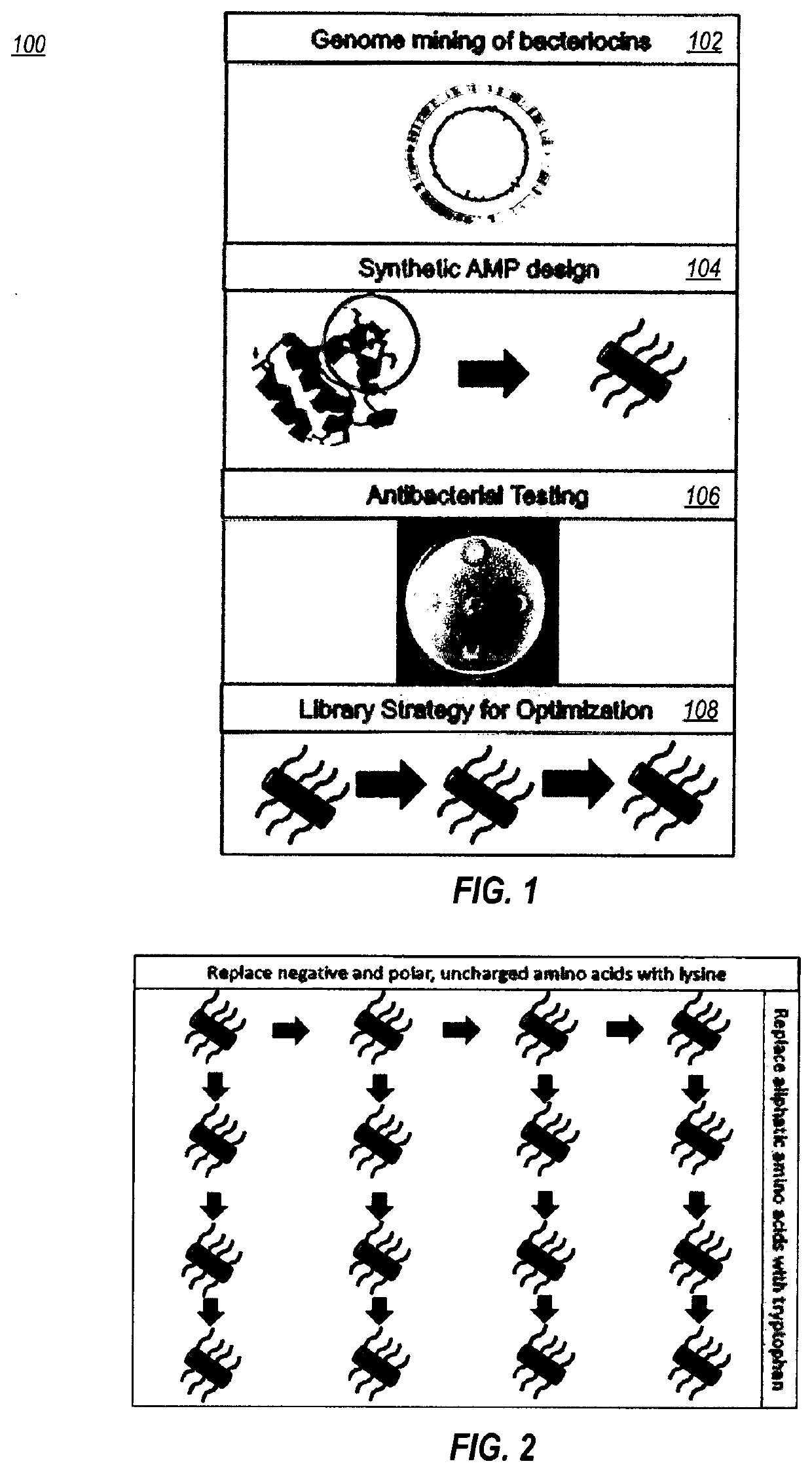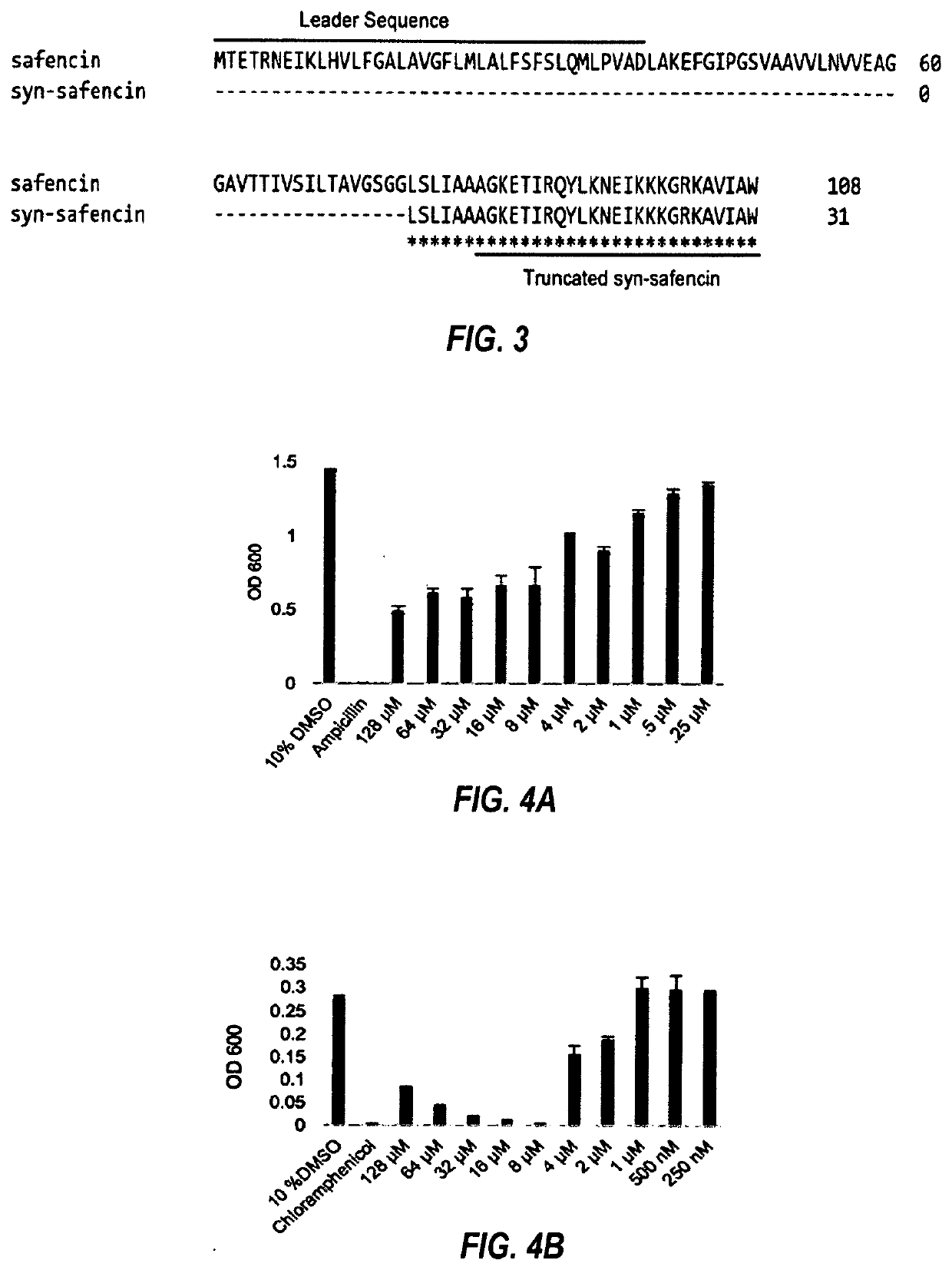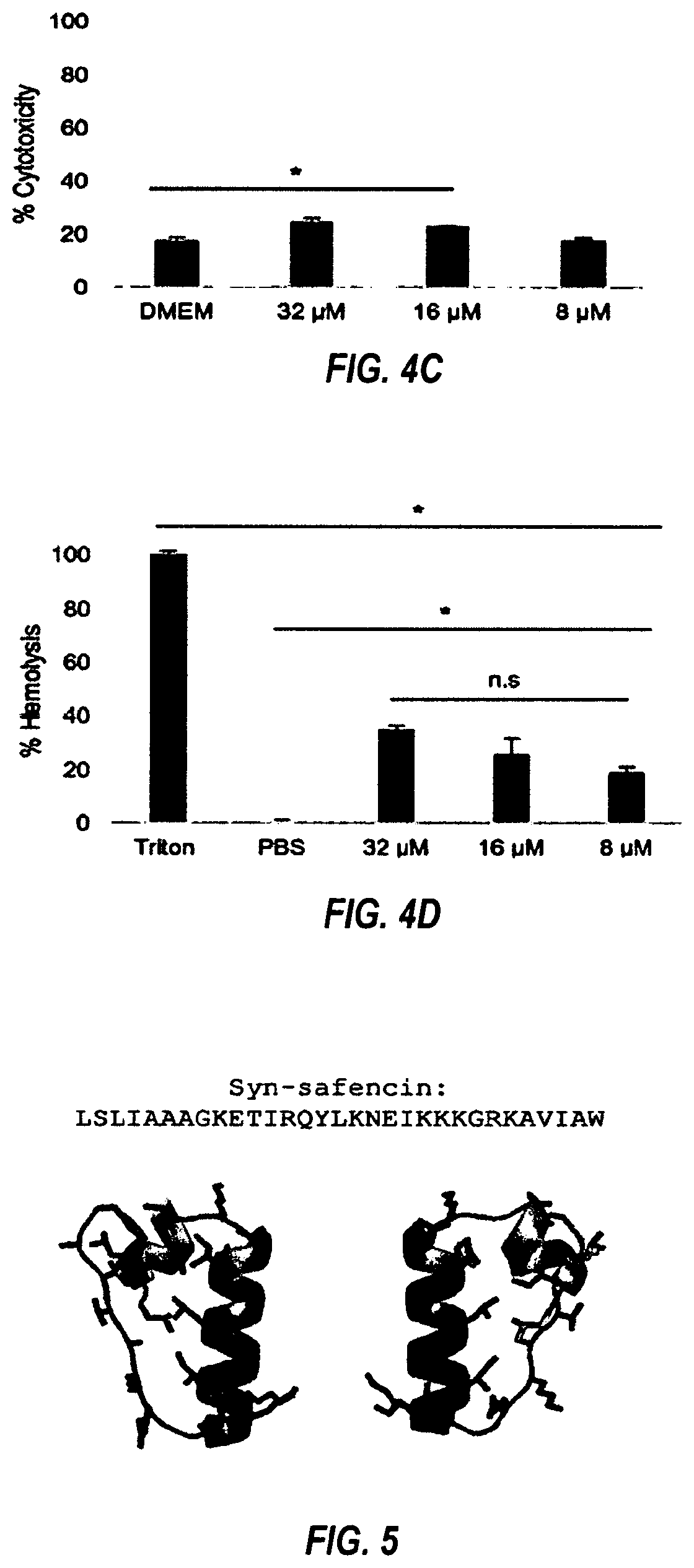Systems and methods for designing synthetic antimicrobial peptides
a technology of synthetic antimicrobial peptides and design criteria, applied in the field of antimicrobial peptides, can solve the problems of not providing a general paradigm for identification, failing to current synthetic peptide design criteria and optimization protocols fail to directly address or account for the complexity inherent in bacteriocin function and production, etc., to achieve the effect of increasing antimicrobial activity, reducing or eliminating an infection caused
- Summary
- Abstract
- Description
- Claims
- Application Information
AI Technical Summary
Benefits of technology
Problems solved by technology
Method used
Image
Examples
example 1
[0143]Bacterial strains and growth conditions used in experimental work presented in Examples 2-8:
[0144]Bacteria.
[0145]E. coli BL-21 frozen stock culture was purchased from Thermo Fischer. Pseudomonas aeruginosa PAO1 frozen stock culture was obtained from the Shrout Laboratory at the University of Notre Dame. Pseudomonas syringae frozen stock culture was obtained from the Innes Laboratory at Indiana University. Xanthomonas axonopodis pathovar Starr and Garces pathovar phaseoli (ATCC 9563) frozen stock culture was purchased from the ATCC. Streptococcus pyogenes M1T1 frozen stock culture was obtained from the lab of Dr. Victor Nizet, University of California San Diego. A methicillin resistant Staphylococcus aureus JKD frozen stock culture was obtained from the lab of Dr. Timothy Stinear, University of Melbourne.
[0146]Growth conditions.
[0147]The E. coli, P. aeruginosa, and P. syringae bacterial strains were routinely grown in LB broth (EMD Chemicals, Gibbstown, N.J.). S. aureus and S. ...
example 2
[0148]MIC determination and peptide screening.
[0149]Overnight bacterial cultures were diluted to an OD of 0.01. μL of diluted culture and 10 μL of 10× peptide or vehicle were added to the wells of a 96-well microtiter plate for a final 1× concentration. Bacteria were grown in desired growth conditions in a Synergy H1 Microplate Reader (Biotek, Winooski, Vt.). For MIC, serial two-fold dilutions of the peptides were used. MIC was determined as the concentration of peptide that prevented overnight growth as indicated by OD 600. For peptide screening, 8 μM or 4 μM peptide was screened against various bacteria. Peptides that inhibited overnight growth were selected for further study.
example 3
[0150]Peptide cytotoxicity assays.
[0151]Eukaryotic cytotoxicity was determined by ethidium homodimer and hemolysis assays. Ethidium homodimer assays were carried out with HaCaT cells in 24-well culture dishes grown to 90% confluency. Medium was aspirated, and cells were washed with PBS. Peptide in fresh DMEM was added to the cells at the desired concentration. Cells were incubated with peptide for 16 h. Medium was aspirated, and cells were washed with PBS. Cells were incubated in 4 μM ethidium homodimer (Molecular Probes) in PBS for 30 min. Fluorescence was determined by 528 excitation and 617 nm emission and a cutoff value of 590 nm. Saponin (0.1%) was then added to each well and incubated for 20 min. The fluorescence was read again. Percent membrane permeabilization was determined by dividing the initial fluorescence by the second fluorescence reading. For hemolysis assays, 100 μL of sheep red blood cells (RBCs) were washed three times in cold PBS (Thermo Fischer). Washed cells we...
PUM
| Property | Measurement | Unit |
|---|---|---|
| pH | aaaaa | aaaaa |
| pH | aaaaa | aaaaa |
| pH | aaaaa | aaaaa |
Abstract
Description
Claims
Application Information
 Login to view more
Login to view more - R&D Engineer
- R&D Manager
- IP Professional
- Industry Leading Data Capabilities
- Powerful AI technology
- Patent DNA Extraction
Browse by: Latest US Patents, China's latest patents, Technical Efficacy Thesaurus, Application Domain, Technology Topic.
© 2024 PatSnap. All rights reserved.Legal|Privacy policy|Modern Slavery Act Transparency Statement|Sitemap



